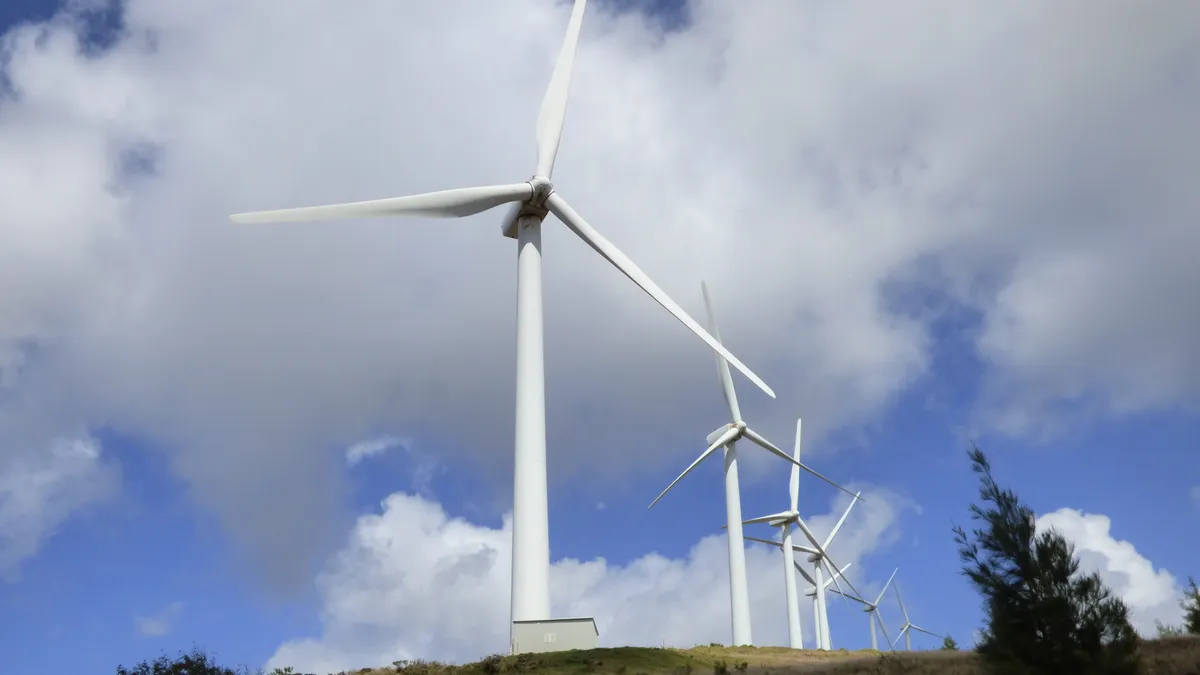Dive Brief:
-
The U.S. Energy Information Administration’s newly released Short Term Energy Outlook (STEO) projects that renewable energy resources, excluding hydropower, will gain about two percentage points, reaching 10% of the U.S. electricity generation market in 2018.
-
The EIA expects generation from gas-fired power plants to drop to 32% in 2017 from 34% in 2016, as a result of higher natural gas prices and increased renewable energy generation.
- But gas-fired generation is projected to maintain a slight lead over coal-fired generation, accounting for 32% of generation in 2018 compared with 31% for coal.
Dive Insight:
The news out of Washington these days is more favorable for coal-fired generation than wind power, but the data from the EIA show an opposite trend. Wind power is leading the growth of renewable energy, according to the latest STEO.
Wind power generated 81 GW of energy in 2016 and the EIA expects it to generate 88 GW in 2017 and 96 GW in 2018.
In terms of market share, wind power accounted for 5.6% of all U.S. utility-scale generation in 2016 and is expected to rise to 6.4% in 2018, EIA energy analyst Tyler Hodge told Utility Dive.
Solar power, on the other hand, accounted for 0.9% of all utility-scale generation in 2016 and is expected to rise to 1.4% in 2018. That gives wind a slightly higher growth rate than solar power — 0.8 percentage points versus solar’s 0.5 percentage points, Hodge said.
Part of the push behind wind power’s growth is likely from the scheduled step-down of the production tax credit (PTC), which is a key incentive behind the growth of the resource. Developers often rush to get their projects into construction before incentives like the PTC decline or expire.
However, provisions in both the House and Senate tax bills, which are being reconciled in a conference committee, are potentially very damaging to the wind sector. Some analysts say the financing of wind projects has been put on hold until it is clear what the final tax bill will contain.
The Trump administration, meanwhile, is pushing the Federal Energy Regulatory Commission to devise rules that would provide incentives for baseload generation resources such as coal and nuclear power.
Many coal and nuclear plants have retired in recent years because they have trouble competing against generation fired by cheap natural gas.
Despite the administration’s efforts — or maybe aided by them in terms of new gas pipeline approvals — the boom in natural gas production as a result of hydraulic fracturing continues.
The most recent STEO forecasts that U.S. dry natural gas production will average 73.5 billion cubic feet per day (Bcf/d) in 2017, a 0.7 Bcf/d increase from 2016. EIA forecasts gas production will be 6.1 Bcf/d higher in 2018 than in 2017. EIA also expects higher exports and domestic demand to put upward pressure on gas prices, with the annual average price rising to $3.12/MMBtu in 2018 from $3.01/MMBtu in 2017.
And while coal production has risen so far in 2017, coming in 8% higher than the first 11 months of 2016, annual production is expected to fall in 2018 because of lower exports and a lack of growth in coal consumption.
There are not a lot of coal plants scheduled to retire in the next two years, Hodge said. The past couple of years were the big years for coal retirements, he told Utility Dive. Hodge also noted that when a coal plant retires, it doesn’t make a big difference in generation share because many of the retiring plants were not running very frequently.













